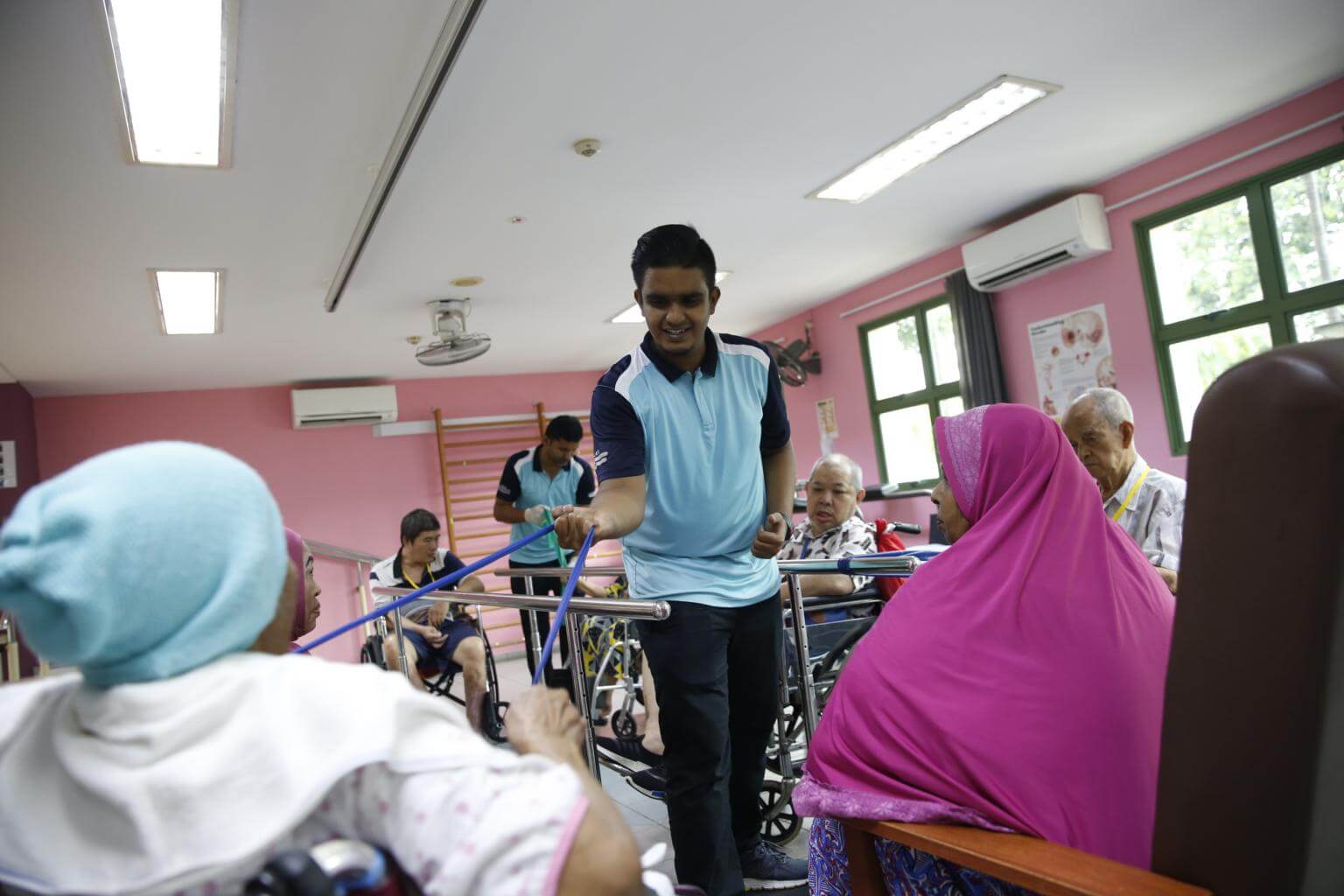Care workers earn less than overseas peers
Low pay and high turnover could make it hard to meet workforce growth target: Lien Foundation
Sign up now: Get ST's newsletters delivered to your inbox

Therapy Assistant Muhammad Muhaza, 23, engaging with elderly residents in a mass therapy session. Care workers are paid lower than receptionists and sales assistants, jobs that require similar educational qualifications.
ST PHOTO: TIMOTHY DAVID
Yuen Sin
Follow topic:
Workers who care for the elderly in nursing homes, daycare centres and at home are paid a lot less than their peers in other countries with similarly ageing populations.
Their pay is also lower than those in other jobs in Singapore that require similar educational qualifications, such as receptionists and sales assistants.
The low pay, coupled with a high turnover rate, could make it difficult for Singapore to meet its target of growing the long-term care workforce by 45 per cent between 2017 and 2020, said a report released yesterday by philanthropic organisation Lien Foundation.
"Despite concerted efforts to raise pay, redesign jobs and improve skills and productivity, the sector seems afflicted by constant churn," the report added.
By 2030, one in four Singaporeans will be aged 65 and older, up from one in eight in 2016.
The six-month study commissioned by the Lien Foundation involves interviews with 35 local and overseas industry practitioners, about 250 long-term care workers and 50 hospital workers. It also compared Singapore with Australia, Hong Kong, Japan and South Korea - four advanced economies in Asia-Pacific with fast-ageing populations.
Singapore ranks lowest among them on wages for long-term care workers - despite its median wage across all occupations in the economy being second only to Australia.
A Singaporean nursing aide earns $1,350 a month on average after taxes, compared with $3,750 in Hong Kong and $3,290 in Australia.


While wages in the sector have risen by one-third since 2012, salaries for local and foreign workers lag behind other jobs requiring similar qualifications. Receptionists earn $1,000 more than nursing aides, who help the elderly with activities such as eating and bathing.
Low wages could account for higher turnover rates, which are double those in hospitals, the report said, with workers in the sector staying with employers for 3.4 years on average. Higher wages in other countries could be drawing talent away from Singapore, it said.
Of the five economies, Singapore relies most on foreigners, who make up 70 per cent of such workers here, compared with 32 per cent in Australia and below 10 per cent in Japan, Hong Kong and South Korea.
Last year, there were 11,000 workers in the sector, of whom 8,300 were direct care workers. The Ministry of Health (MOH) aims to increase direct care workers by 3,700 between 2017 and 2020. Last year, 1,000 locals joined the sector through recruitment initiatives.
One way to raise salaries is to introduce a Progressive Wage Model (PWM) for the sector, which should cover foreign workers too, said Ms Radha Basu, director of research and advocacy at Lien Foundation. A PWM is a wage ladder that specifies higher pay for workers as they upgrade their skills.
The report also suggested changes to recruitment, like cutting out agents when hiring foreigners.
Ms K. Thanaletchimi, president of the Healthcare Services Employees' Union, was not surprised by the findings. "The sector has been stagnating in creating a skills ladder and redesigning jobs," she said.
She suggested setting up an association to set guidelines and standards, like benchmarks for wages.
In response to queries, a MOH spokesman said that the ministry is on track to meet projected manpower needs in 2020 and it will press on with efforts to recruit and retain manpower in the sector.

